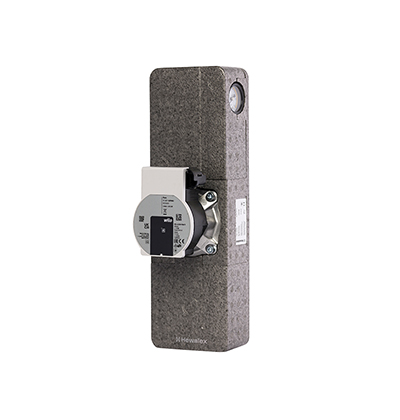
- 1-way design
- Modular structure
- Minimum dimensions
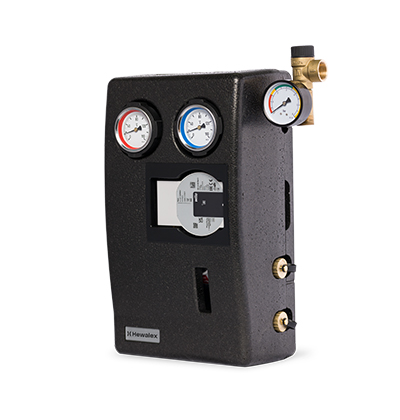
- 2-way design
- Built-in thermometers and flow meter
- Increased flow
Easy to install and use
Energy-saving circulation pumps
Works with any controller
Compact, well thought-out design
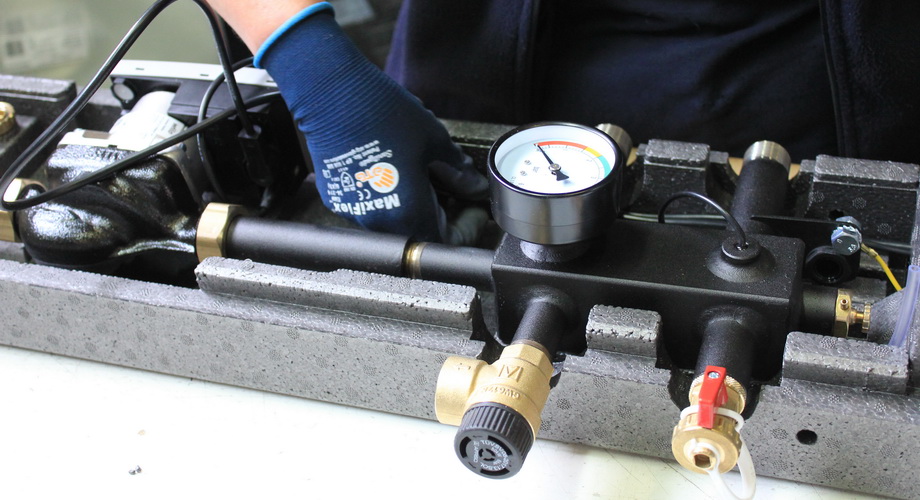
The focal point of the system – the pump station for the solar thermal system
The central component of the solar thermal system located between the solar thermal collectors and the hot water storage tank is the pump station. It is a key component of the system responsible for the transport of heat – from the solar thermal collectors to the hot water storage tank. The circulation pump forces the glycol to flow for this purpose.
The pump station is designed to operate in non-standard conditions – with glycol, which has a higher density than water, and can also reach increased operating temperatures. This requires the use of heavy-duty materials, including heat-resistant seals or thermal insulation. The pump station for a solar thermal system must be selected with the size of the system in mind. This drives the flow rate of the glycol, which removes heat from the solar thermal collectors to ensure their cooling.
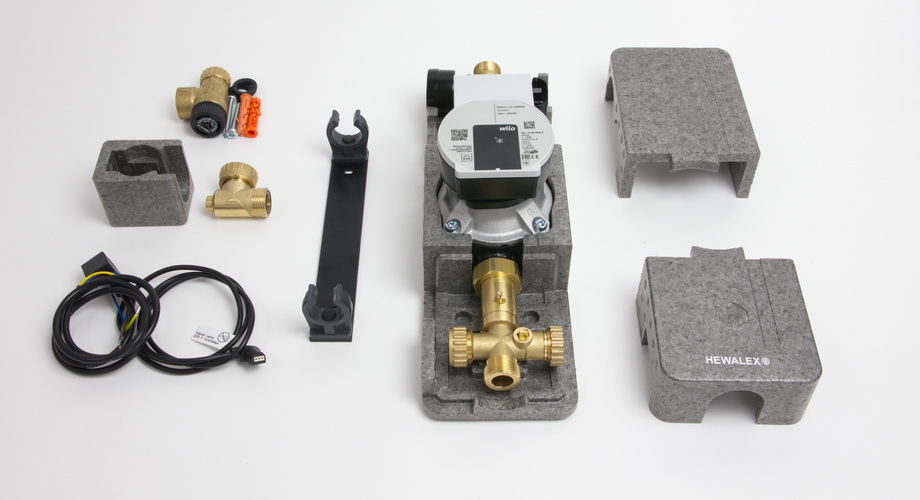
How do I choose the right pump station?
Usually, pump station manufacturers declare what flow rate (e.g., up to 10 l/min. for the ALEX HX10 unit) a particular model can be used for. A convenient conversion factor is also used – up to what area of solar thermal collectors the unit can be designed for (e.g., up to 10 m2 for the ALEX HX10).
In addition to the circulating pump, what components does the pump station contain? In addition to its primary function of forcing the flow of glycol, it is also responsible for protecting the solar thermal system. Hence, there is a safety valve and an expansion vessel connection port. The vessel compensates for changes in the volume of glycol due to its fluctuating temperature. In this way there should be no excessive pressure build-up in the system, even if the stagnant solar thermal collectors are overheated. If for some reason the pressure in the system approaches the maximum allowable pressure, the safety valve will open.
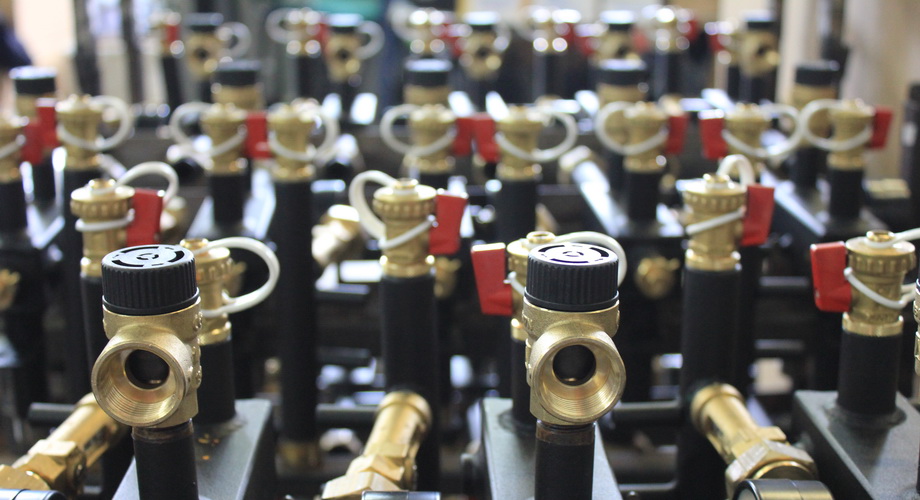
Solar pump station – one-way or two-way?
Solar pump station manufacturers offer different variants of their products. The basic division here is between one-way and two-way pump stations. One-way solar pump stations (e.g., the ALEX HX10 from Hewalex) are characterised by their compact design and small dimensions. They are usually installed close to the hot water storage tank on the return line to the solar thermal collectors, where the glycol is already cooled after giving up heat in the coil heat exchanger. The quick installation of the one-way stations is also due to the fact that they only have two connections.
Two-way solar pump stations (e.g., ZP2-12 ECO by Hewalex) often have more extensive accessories, including a feed and return thermometer in the solar circuit or a deaerator. Their installation requires more work due to the fact that the station has four connections and is installed on the supply and return pipes of the solar thermal system.


